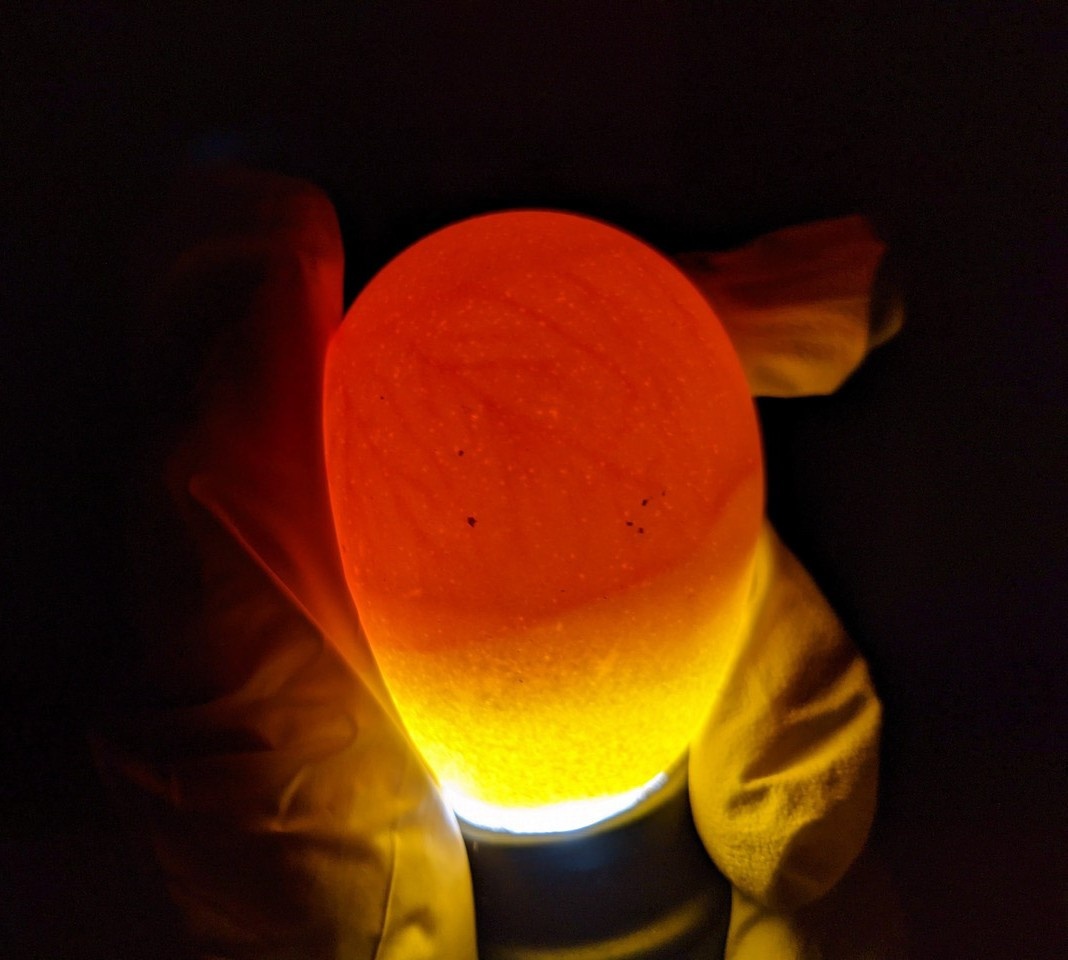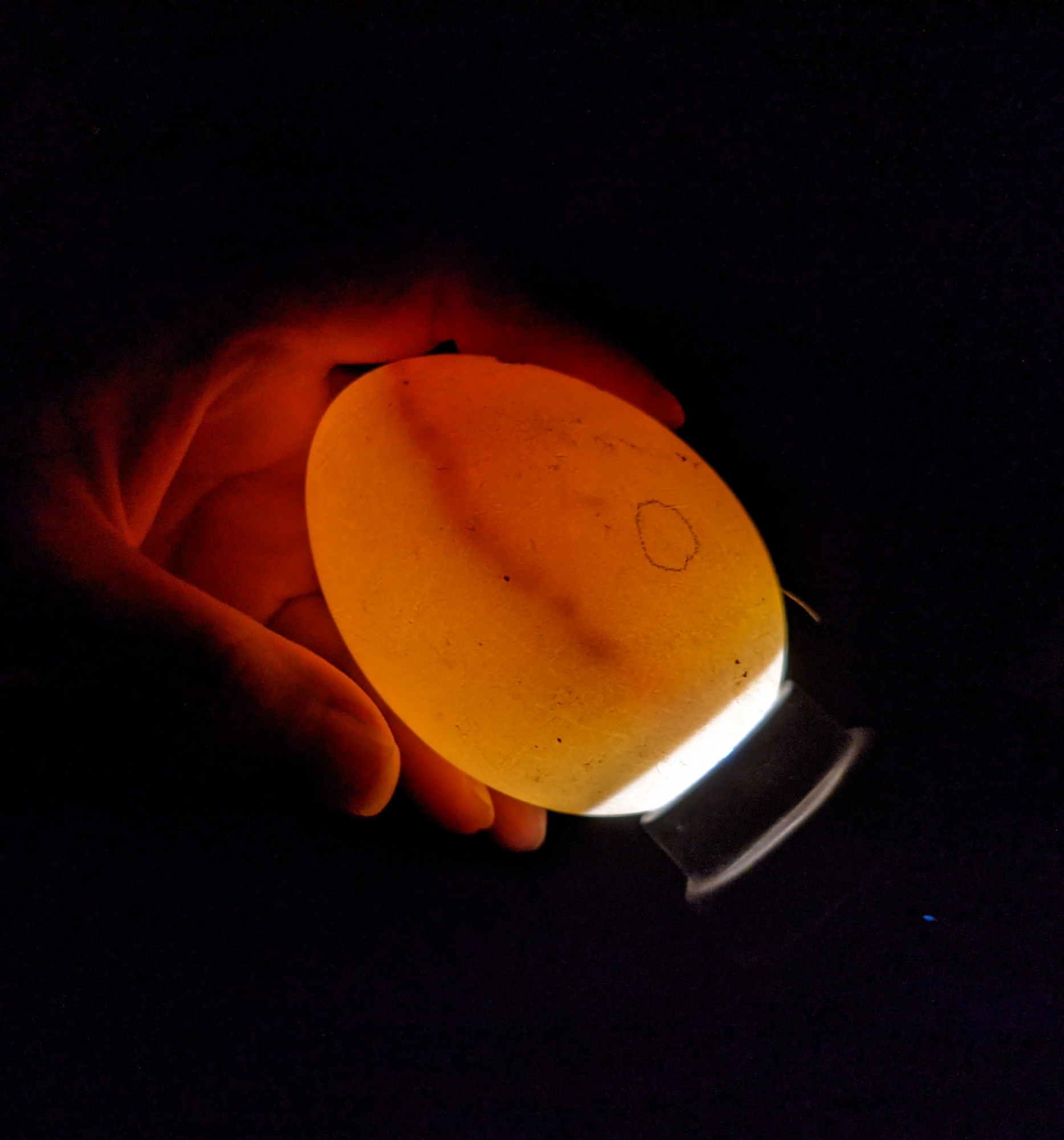
The shipped American Bresse eggs have been in the incubator for a week, so they’re a third of the way through the incubation process. At this point, I like to do the first candling to identify which eggs are developing (and to remove ones that aren’t). Read on to find out how many eggs are still left in the incubator!
These eggs had the advantage of not traveling far, and not being misrouted or unduly delayed (unlike Lavender Ameraucana #1). Air cells were, overall, in good shape. The big question, then, is how will fertility look?
A very bright candler like my Magicfly provides a clear view into the tinted and cream-colored eggs. What a pleasure to be able to easily discern whether there was development! With our flock’s very dark brown eggs and olive eggs, candling is difficult – and the olive eggs can be nearly impossible to see into. I was pleased to see that many were developing, with nice veining through a significant portion of the egg.

If you’re new to artificial incubation, you might be wondering if the red ring toward the middle of the shell is a sign that the embryo has stopped developing: the dreaded “blood ring”. It’s not – though it may appear similar, the active veins (stretching from the top of the egg to that ring), as well as the bright red coloring are indicators that the egg is still developing.
A blood ring will typically be accompanied by black spots and discoloration in the egg (due to the death of the embryo and the deterioration of the blood vessels).

Of the 15 eggs, 6 were not fertile – a 60% fertility rate. Considering the time of year (many chickens are beginning to molt and laying slows due to the reduced hours of daylight), it may be normal for the breeder’s flock. Of course, I would have liked closer to an 80% fertility rate to help ensure that by the end of the incubation, at least a few chicks were running around.
The next candling will be at the 2 week mark. At that point, the eggs will be a week out from hatching day, and eggs that are still developing then should have a good chance of hatching. The adage “don’t count your chickens before they hatch” was obviously coined by an experienced hatcher – there are many things that can still go wrong and result in a “quitter”, even up to hatching day. Some chicks can even begin to hatch and die. I’ll be monitoring progress closely throughout this incubation and especially during lockdown (the days immediately preceding hatching day), and I’ll be ready to assist, if needed.
Next update will be in about a week. Stay tuned!
